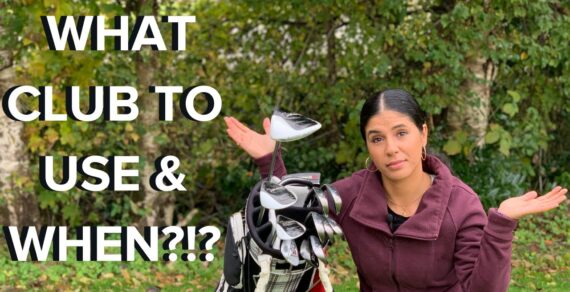Features, Reviews, and Benefits Golf club types and distances

Unveiling the Ultimate Guide to Golf Club Types and Distances for Optimal Performance!

When it comes to choosing the right golf clubs for your game, understanding the features, reviews, and benefits of different types can help you make an informed decision. One crucial aspect to consider is the distance each club can provide. Let’s take a look at the various golf club types and their typical distances:
1. Driver:
Features: The driver is designed with a large clubhead and a long shaft to help golfers hit the ball off the tee with maximum distance.
Reviews: Golfers often praise the driver for its ability to deliver long, powerful shots.
Benefits: Using a driver can help you achieve maximum distance off the tee, setting you up for a better approach shot to the green.
2. Fairway Woods:
Features: Fairway woods have a slightly smaller clubhead than the driver, making them more suitable for hitting shots off the fairway or rough.
Reviews: Golfers appreciate the versatility of fairway woods, as they can be used for both distance shots and accurate approach shots.
Benefits: Fairway woods are excellent choices for hitting long shots from the fairway or rough, providing good distance and control.
3. Irons:
Features: Irons come in various numbers (3-9), with each number representing a different loft angle and distance potential.
Reviews: Golfers value irons for their precision and accuracy, especially for approach shots to the green.
Benefits: Irons are essential for making accurate shots at various distances on the course, from long approach shots to shorter chip shots.
4. Wedges:
Features: Wedges have higher loft angles than irons and are designed for short-distance shots around the green.
Reviews: Wedges are highly praised for their ability to produce high, soft shots that stop quickly on the green.
Benefits: Using wedges can help you navigate challenging situations around the green, such as bunkers or rough, and improve your chances of making a successful shot.
5. Putters:
Features: Putters have a flat face and are used to roll the ball along the green to the hole.
Reviews: Golfers often rely on putters for their accuracy and consistency in putting.
Benefits: Putting is a crucial skill in golf, and using the right putter can help you improve your overall score by sinking more putts.
By understanding the features, reviews, and benefits of different golf club types and their typical distances, you can choose the right combination of clubs to enhance your game and tackle the challenges of the course effectively.

There are several different types of golf clubs that players use to navigate the course, each designed for specific distances and shots. Here are some common golf club types and the average distances they can achieve:
1. Driver: Also known as the 1-wood, the driver is the longest club in a golfer’s bag and is typically used for tee shots on long par-4s and par-5s. The average distance for a well-hit driver shot is around 220-250 yards for amateur players, while professional golfers can achieve distances of over 300 yards.
2. Fairway Woods: Fairway woods, typically the 3-wood and 5-wood, are designed for longer shots from the fairway or tee box when more distance is needed than can be achieved with an iron. The average distance for a well-hit fairway wood shot is around 180-220 yards for amateur players.
3. Irons: Irons are used for approach shots to the green and are available in various numbers (typically 3-9). Each iron has a different loft angle, which affects the trajectory and distance of the shot. The average distance for a well-hit 4-iron shot is around 160-200 yards for amateur players.
4. Wedges: Wedges, such as pitching wedges, sand wedges, and lob wedges, are used for short approach shots around the green and for shots out of bunkers. The distance for wedge shots can vary greatly depending on the type of wedge and the player’s skill level, but on average, distances range from 50-120 yards.
5. Putter: The putter is used on the putting green to roll the ball into the hole. Putters are not designed for distance but for accuracy, control, and consistency in speed. The average distance for a putter shot is typically less than 50 feet.
Overall, understanding the distances and capabilities of each type of golf club is essential for golfers to make strategic decisions and optimize their performance on the course. Practice and experience can help players develop a better feel for their clubs and improve their overall game.
Golf club types and distances Specifications
1. Driver – Typically used for long-distance shots off the tee, the average distance for a driver shot is around 220-250 yards for most amateur golfers.
2. Fairway Wood – Used for long shots from the fairway, rough, or tee, fairway woods have an average distance of around 180-210 yards.
3. Hybrid – Hybrids are a versatile club that can be used for long shots or to replace difficult to hit long irons. They have an average distance of around 160-200 yards.
4. Irons – Irons are used for shots ranging from 100-200 yards, depending on the club. For example, a 3-iron may reach around 180-200 yards, while a pitching wedge may only reach around 100-120 yards.
5. Wedges – Wedges are used for short shots around the green or for approach shots that require precision. The distances for wedges can vary greatly, with a lob wedge typically reaching around 60-80 yards and a sand wedge around 80-100 yards.
6. Putter – Used exclusively on the green, the putter is used to roll the ball into the hole. Putters do not typically have a “distance,” but are instead used for accuracy and control.
Overall, the distances for each golf club can vary greatly depending on the individual player’s skill level, swing speed, and technique. It is important for golfers to practice with each club to determine their own personal distances and to improve their overall game.
What GOLF CLUBS do beginners need?? [Golf Basics]
| From YouTube channel: | Golfbidder |
| Length of Video: | 8:34 |
| Total Views of Video: | 697074 |
| Short Description about Video: | If you’re new to golf and looking forward to getting out for your first game but don’t know what actual golf clubs you’ll need to start |
Golf club types and distances Advantages and Disadvantages
Advantages of different golf club types and distances:
1. Driver: The driver is typically the longest club in a golfer’s bag, allowing for maximum distance off the tee. It is ideal for tee shots on longer holes where distance is crucial.
2. Irons: Irons are versatile clubs that can be used for a variety of shots, including approach shots to the green and shots from the fairway. They offer good control and accuracy, making them essential for shaping shots and playing in various conditions.
3. Wedges: Wedges are designed for short approach shots, bunker shots, and shots around the green. They have a high loft, which helps golfers get the ball in the air quickly and stop it quickly on the green.
4. Putter: The putter is used on the green to roll the ball into the hole. It is the most important club for scoring well, as putting typically makes up a significant portion of a golfer’s shots during a round.
Disadvantages of different golf club types and distances:
1. Driver: The driver can be difficult to control for some golfers, leading to errant shots and lost balls if not struck properly. It also has a low loft, making it unsuitable for shots that require height and accuracy over distance.
2. Irons: Some golfers struggle with consistency when using irons, especially longer irons, as they require a more precise strike to produce optimal results. This can lead to missed greens and longer putts, resulting in higher scores.
3. Wedges: Wedges can be challenging to master for inexperienced golfers, as they require a delicate touch and precise distance control. Mishitting a wedge shot can result in the ball coming up short or flying past the target, leading to wasted strokes.
4. Putter: Putting is often seen as the most challenging aspect of golf, as even minor errors in alignment or stroke can result in missed putts. Developing a consistent putting stroke and green-reading skills can be a long and ongoing process for many golfers.
14 Golf Clubs Explained – What To Use and When? Beginner Golfer Basics
| From YouTube channel: | Coach Shayain |
| Length of Video: | 9:16 |
| Total Views of Video: | 360440 |
| Short Description about Video: | 14 Golf Clubs Explained – What To Use and When? Beginner Golfer Basics. This question I get asked by all beginner golfers. |
Golf club types and distances Conclusion
When to Use Each Golf Club – What Golf Club to Use For Each Shot
| From YouTube channel: | Golf Sidekick |
| Length of Video: | 22:55 |
| Total Views of Video: | 108629 |
| Short Description about Video: | Swingtweaks is the best place to get PGA Professional Instruction. You get video analysis, a lesson summary and drills to take to |
In conclusion, there are many different types of golf clubs designed for specific purposes on the course. The distance each club can achieve varies depending on factors such as the golfer’s skill level and swing technique. Understanding the different types of clubs and their respective distances can help golfers make more informed decisions while on the course, ultimately improving their game. It is important for golfers to practice with each club to develop a feel for their individual distances and abilities.

